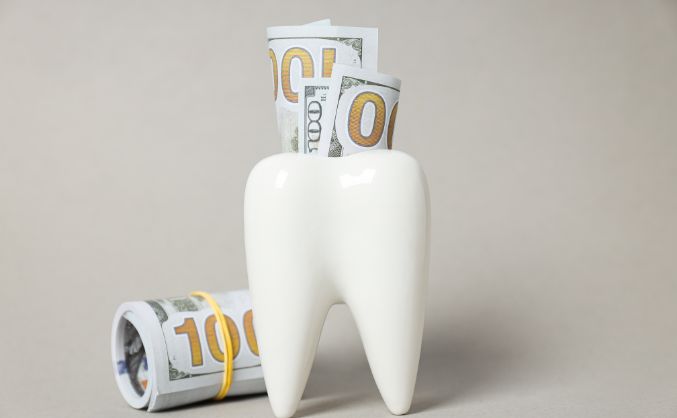If you’ve been considering braces to achieve a perfect smile, you’ve probably wondered: How much are braces with insurance? The truth is, the final cost can vary quite a bit depending on several factors. This blog will explain this important topic, helping you understand insurance coverage so you can estimate your out-of-pocket expenses.
The Basics of Orthodontic Insurance Coverage
The good news is that many dental insurance plans offer some coverage for braces, particularly for children and teenagers. In fact, orthodontics can often address functional problems beyond aesthetics, like improving bite and preventing future dental issues. However, the extent of coverage can vary significantly. Here are some key things to consider when it comes to braces and insurance:
- Age: Adult orthodontic treatment is becoming increasingly common. However, insurance plans are more likely to offer coverage for orthodontic treatment for children. This is because childhood is often the prime window for correcting bite problems and achieving optimal jaw development.
- Type of Plan: Typically, you can choose from two main types of dental plans, each with their own coverage details. PPO plans offer more flexibility in choosing an orthodontist. HMO plans generally require you to see an in-network orthodontist.
- Lifetime Orthodontic Maximum: Many insurance plans have a lifetime maximum for orthodontic coverage. This term refers to a set dollar amount that the plan will cover for orthodontic treatment throughout your lifetime.
The Consumer Guide to Dentistry suggests checking with your insurance provider for specifics and coverage details. Ask about deductibles, annual maximums, and the percentage covered for orthodontic treatment.
How Much Will You Pay for Braces with Insurance?
Without insurance, the average cost of braces can range from $3,000 to $10,000. Dental insurance can significantly reduce this cost, potentially saving you thousands of dollars. The total price you’ll pay out-of-pocket depends on several factors, including:
Type of Braces:
Traditional metal braces are generally the most affordable option. Clear aligners like Invisalign may have a higher price tag.
Treatment Length:
The longer your treatment lasts, the more appointments you’ll have, potentially increasing the overall cost.
Your Insurance Coverage:
As mentioned earlier, your insurance plan will determine the percentage covered and the lifetime maximum benefit.
Here’s the key takeaway:
While insurance can lower your overall cost, it likely won’t cover the entire treatment. To get an accurate estimate, including how much your insurance will contribute, consult with your orthodontist. They’ll assess your needs, recommend the best course of treatment, and provide a cost breakdown based on your specific insurance plan.
How to Manage the Cost of Braces & Reduce Out-of-Pocket Expenses
So far, we’ve discussed the basics of orthodontic coverage and factors that affect treatment cost. Now, let’s look at some tips to help you manage the cost of braces:
Know Your Plan:
Get familiar with the details of your dental insurance plan. Understanding your coverage for orthodontics, including deductibles, annual maximums, and percentage covered, is critical for budgeting and planning.
Explore Payment Plans:
Many orthodontic clinics, including Dr. Murray Orthodontics, offer payment plans to help make treatment more affordable. Be sure to ask about financing options during your consultation. Additionally, some credit cards now allow you to pay for larger purchases over time with little to no interest.
Consider Different Braces:
Traditional metal braces are typically the most cost-effective option. However, discuss the various types of braces available (such as ceramic or clear aligners) with your orthodontist. They’ll work with you to find the best fit for your budget and lifestyle.
Leverage FSAs and HSAs:
You may be able to use your Flexible Spending Account (FSA) or Health Savings Account (HSA) for braces. With these accounts, you can use pre-tax dollars to pay for some orthodontic treatments. Be sure to check with your plan administrator to confirm whether orthodontic treatment is an eligible expense.
Schedule Your Consultation with Dr. Murray Orthodontics Today & Get Smiling!

A beautiful smile can boost your confidence and improve your overall well-being. At Dr. Murray Orthodontics, we understand that orthodontic treatment is an investment. We’re committed to making it accessible and affordable. Moreover, we offer a variety of treatment options, including traditional braces, clear ceramic braces, and Invisalign aligners.
Ready to take the first step towards your dream smile? Contact Dr. Murray Orthodontics today to schedule a consultation. We’ll answer all your questions, discuss your insurance coverage, and provide you with a personalized cost estimate. Our experienced team will work closely with you to develop an appropriate treatment plan that fits your needs.
FAQs
Q: Do health insurance plans cover braces for children?
A: Yes, many insurance plans cover braces for kids, mainly if needed for health reasons. Check with your insurance company for specifics on coverage.
Q: Does insurance cover braces for adults?
A: Yes, but it’s less common. Adult coverage might only apply for medically-approved treatments. For specifics, review your policy or talk to your provider.
Q: How do I make the most of my insurance for braces?
A: Choose an in-network orthodontist and get a pre-treatment estimate. Plan treatments to use your annual maximum benefits wisely.
Q: Can insurance help pay for alternative orthodontic options?
A: Yes, insurance policies often extend coverage to include alternative orthodontic treatments, such as clear aligners, alongside traditional braces. Eligibility and the extent of coverage can vary greatly between policies. Consult with your insurance provider to understand which treatments your plan covers.

